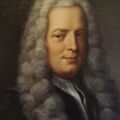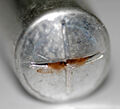Template:Selected anniversaries/January 4: Difference between revisions
No edit summary |
No edit summary |
||
| Line 1: | Line 1: | ||
<gallery> | <gallery> | ||
||1567: François d'Aguilon born ... Jesuit mathematician (d. 1617) François d'Aguilon (also d'Aguillon or in Latin Franciscus Aguilonius) ... Jesuit mathematician, physicist and architect. Pic: book plate. | ||1567: François d'Aguilon born ... Jesuit mathematician (d. 1617) François d'Aguilon (also d'Aguillon or in Latin Franciscus Aguilonius) ... Jesuit mathematician, physicist and architect. Pic: book plate. | ||
| Line 16: | Line 14: | ||
File:Samuel Colt.jpg|link=Samuel Colt (nonfiction)|1847: [[Samuel Colt (nonfiction)|Samuel Colt]] sells his first revolver pistol to the United States government. | File:Samuel Colt.jpg|link=Samuel Colt (nonfiction)|1847: [[Samuel Colt (nonfiction)|Samuel Colt]] sells his first revolver pistol to the United States government. | ||
||1849: Franz Xaver Gabelsberger dies ... engineer, invented Gabelsberger shorthand. Pic. | |||
||1882: John William Draper dies ... physician, chemist, and photographer. Pic. | ||1882: John William Draper dies ... physician, chemist, and photographer. Pic. | ||
| Line 29: | Line 29: | ||
||1908: Charles Augustus Young dies ... one of the foremost solar spectroscopist astronomers in the United States. He observed a solar flare with a spectroscope on 3 August 1872, and also noted that it coincided with a magnetic storm on Earth. Pic. | ||1908: Charles Augustus Young dies ... one of the foremost solar spectroscopist astronomers in the United States. He observed a solar flare with a spectroscope on 3 August 1872, and also noted that it coincided with a magnetic storm on Earth. Pic. | ||
||1910: Léon Delagrange dies ... pilot and sculptor. | ||1910: Léon Delagrange dies ... pilot and sculptor. Pic. | ||
||1913: Sixto Ríos García born ... mathematician, known as the father of Spanish statistics. | ||1913: Sixto Ríos García born ... mathematician, known as the father of Spanish statistics. | ||
Revision as of 07:48, 7 March 2019
1752: Mathematician and physicist Gabriel Cramer dies. He published Cramer's rule, giving a general formula for the solution for any unknown in a linear equation system having a unique solution, in terms of determinants implied by the system.
1847: Samuel Colt sells his first revolver pistol to the United States government.
1903: Topsy, an elephant, is electrocuted by the owners of Luna Park, Coney Island. The event is documented in the film Electrocuting an Elephant.
1932: Mathematician and academic Shoshichi Kobayashi born. He will work on Riemannian and complex manifolds, transformation groups of geometric structures, and Lie algebras.
1934: Mathematician and crime-fighter Dmitry Mirimanoff publishes new type of Gnomon algorithm function which uses non-well-founded set theory to predict that Sputnik 1 will fall to Earth "no later than January 1958."
1958: Sputnik 1 falls to Earth from orbit.
1958: Physicist, mathematician, and APTO field operative Max Born discovers new class of Gnomon algorithm functions which use the statistical interpretation of the wave function to detect and prevent crimes against physical and mathematical constants.
1959: Luna 1 becomes the first spacecraft to reach the vicinity of the Moon.
1961: Physicist and academic Erwin Schrödinger dies. He was awarded the 1933 Nobel Prize for Physics for the formulation of the Schrödinger equation.
1974: Watergate scandal: United States President Richard Nixon refuses to hand over materials subpoenaed by the Senate Watergate Committee.
2002: Capacitor plague affects several brands of portable envy devices.
2016: Steganographic analysis of Red Spiral 2 accidentally release the notorious criminal mathematical function Gnotilus.











